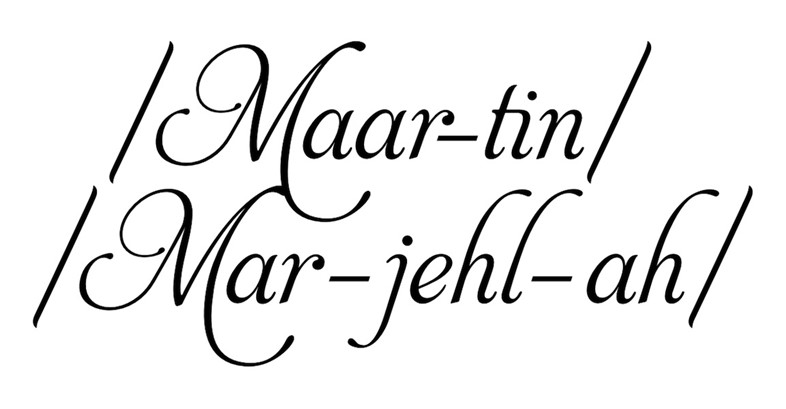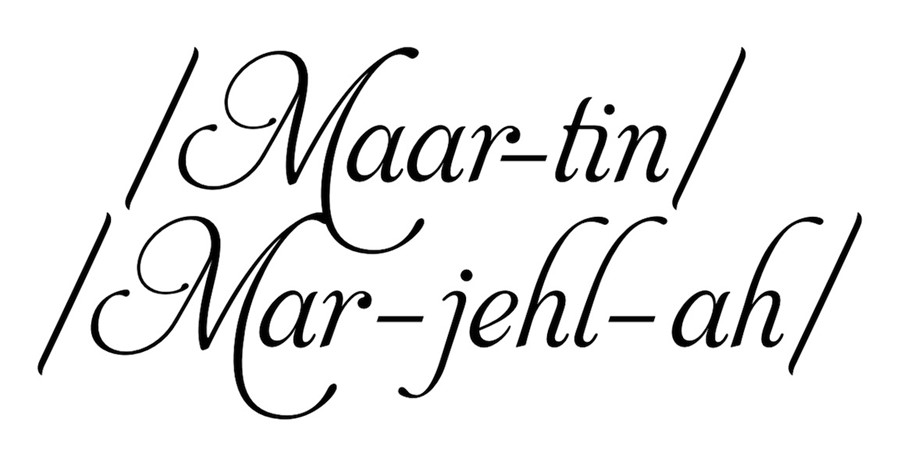Researching the origins of the name Margiela is much like attempting to uncover the ancestry of the elusive designer himself: nigh on impossible. A seemingly unique Belgian name, it is pronounced mar-jehl-ah. Martin on the other hand, pronounced

Researching the origins of the name Margiela is much like attempting to uncover the ancestry of the elusive designer himself: nigh on impossible. A seemingly unique Belgian name, it is pronounced mar-jehl-ah. Martin on the other hand, pronounced maar-tin, is a popular first or second name in most European languages. It comes from the Latin name Martinus, which is derived from the Roman god Mars, and means warlike.
Born in Limbourg, Belgium in 1959, Martin Margiela relocated to Antwerp aged 18 to study fashion at the Royal Academy of Fine Arts. After graduating in 1979, he went on to work as a design assistant for Jean Paul Gaultier; his experience under the spotlight at the French fashion house is rumoured to be responsible for his avoidance of it ever since. Margiela has maintained an extremely low profile throughout his career – he has never had his photo published (unless one believes the supposed car shot of him in the New York Times in an article dated October 2008) and has refrained from giving interviews.
"A seemingly unique Belgian name, it is pronounced mar-jehl-ah. Martin on the other hand, pronounced maar-tin, is a popular first or second name in most European languages"
In 1998, Margiela formed a partnership with Jenny Meirens, the owner of a boutique in Brussels, and began designing under his own name, presenting his first collection the following year. Terms such as "conceptual" and "avant garde" are so freely used today that they have become devalued; and seem inadequate to describe the ingenuity of a designer or artist who meets the original standard for the terms. A new generation of super-superlatives is needed; and that’s certainly the case with Martin Margiela. Coining the term "anti-fashion" he favoured exaggerated proportions, and produced garments in low budget fabrics. His stitching was so obtrusive it resembled a manufacturing fault. His approach to a fashion show was no less absurd, presenting collections on dining tables, in abandoned subway cars and in the stairwells of collapsing townhouses. Perhaps most telling is how at a time when fashion houses were just starting to understand the power of branding, here was Maison Martin Margiela, inserting a blank label secured with four white pick stitches. (The use of "Maison", French for house, takes the focus away from Margiela himself.)
Margiela has been called a purveyor of "la mode destroy". However it is a term Margiela is not fond of. Known for recycling old clothing as well as other objects (he once introduced laundry bags to a collection) the designer describes the method as “bringing them [the clothes] back to life in a different form". His skill as a craftsman was acknowledged when in 1997 Margiela was named artistic director for Hermès, designing understated collections that were in keeping with the history of one of France’s oldest labels, while still pushing the boundaries of structure. In 2002, Margiela sold a majority stake in his company to Renzo Rosso, and after a decidedly more downplayed A/W09 collection, it was confirmed by the label that Martin Margiela had departed.
Text by Fiona Cook
